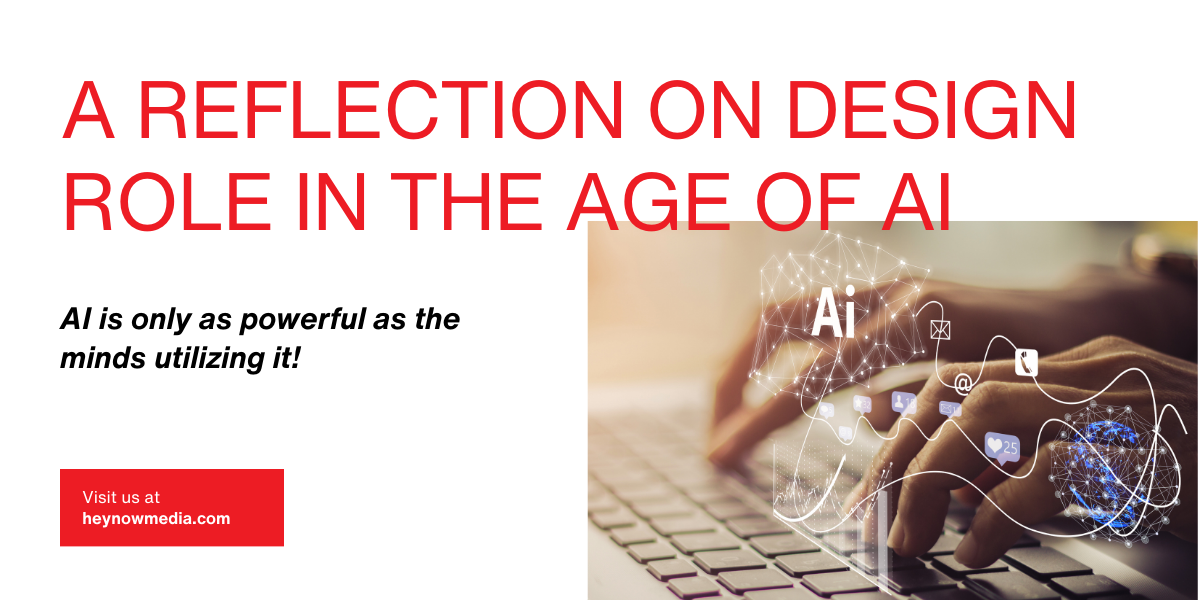When considering the current landscape of design, it’s hard not to notice the growing impact of Artificial Intelligence (AI) and its implications on creative processes. As a designer, I’ve closely witnessed this gradual yet noticeable shift, transforming AI from a tool to an integral element, enhancing and expanding our capabilities.
One of the most notable changes is the improved efficiency that AI brings to workflows. Tasks that once took hours are now completed in surprisingly short timeframes, allowing for a more agile exploration of diverse ideas. The design professional, once pressed for time, finds a reliable ally in AI, freeing up time for more essential activities such as creative experimentation.
The efficiency boost is not confined to individuals alone. Team dynamics benefit significantly as AI takes on routine tasks, enabling designers to focus on more meaningful and strategic collaborations. Design agencies also undergo a shift in their dynamics, raising the standard of quality and expanding possibilities.
On a broader scale, the relationship between designers and clients undergoes a noteworthy transformation. AI acts as a bridge between the client’s vision and the materialization of the design, providing a quicker and more accurate understanding of expectations. The results are projects more aligned with real needs, strengthening relationships and building trust.
It’s essential to understand that AI is not a magic solution that solves all problems. In certain situations, the flame of human creativity remains vital for design processes. However, AI proves to be a powerful catalyst, driving efficiency, collaboration, inclusivity, and sustainability in the field of design.
The Transformation of Design Agencies
In the current landscape, design agencies are adapting to the presence of AI, incorporating these tools to enhance efficiency and maximize productivity. However, it’s imperative to strike a balance as agencies must preserve the intrinsic value of their work, providing clients with tangible results and expertise that AI cannot replicate.
Differentiation in the AI Market
Design agencies have the opportunity to stand out in a market saturated with AI by offering distinct benefits to clients:
Experience and Expertise: With years of immersion in design, agencies have the ability to deeply understand clients’ needs, delivering effective solutions aligned with expectations.
Creativity and Innovation: By thinking beyond conventional patterns, design agencies can create innovative solutions that go beyond the autonomous capabilities of AI.
Personal Relationships: Maintaining solid personal relationships gives agencies a deeper understanding of individual needs, enabling the delivery of highly personalized services.
The Importance of the Designer as a Strategic Mind
In this evolving scenario, it’s crucial to realize that the designer is more than just a tool. AI acts as a facilitator, speeding up operational tasks, fueling the designer’s intelligence, and freeing up time for true strategic essence. The designer, instead of merely executing, assumes the role of a strategic thinker, leading discovery processes, and defining strategies that transcend mere execution. In this context, AI not only enhances the toolkit but also empowers the designer to stand out as an intelligent force in creation, shaping the design of the future.
However, it’s crucial to maintain a balanced perspective. AI is not a one-size-fits-all solution; it is a valuable tool in the hands of creative minds. True innovation arises from the intersection of AI logic and human intuition, where the machine amplifies, but does not replace, artistic vision.
As AI expands in the design and marketing world, it’s crucial to emphasize the irreplaceable value of human creativity. While AI optimizes processes, provides valuable insights, and enhances efficiency, the true essence of design lies in human ability to innovate, interpret emotions, and conceive groundbreaking ideas.
Celebrating AI contributions, it’s essential to preserve the uniqueness of the human touch in design. Agencies should foster environments that stimulate creativity, encourage experimentation, and appreciate intuition. Combining AI precision with human intuition results in creations that not only meet functional needs but also resonate emotionally with the audience.
This addendum underscores the ongoing need to prioritize human creativity as a vital force in design. In a future where AI is an ally, agencies striking a balance between technological efficiency and the human creative spark are destined to lead the forefront of innovation and establish enduring emotional connections through design.
As we navigate through these changes, it’s essential to remember that AI is only as powerful as the minds utilizing it. The real magic emerges from the collaboration between the human mind and AI, redefining and reinventing design. We stand on the brink of an era where design is not just an artistic expression but an unprecedented fusion of human creativity and technology.
And as AI continues to evolve, design agencies that excel in these attributes are positioned not just to survive but to thrive in a future propelled by the synergy between human creativity and artificial intelligence. This is a transformative moment, where agencies will play a crucial role in shaping a design narrative filled with innovation and relevance.


